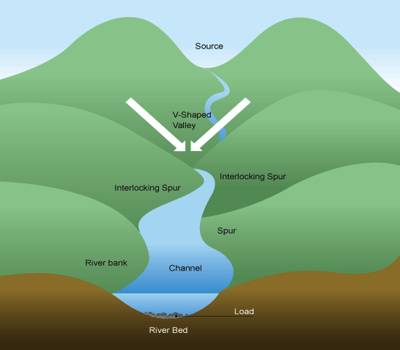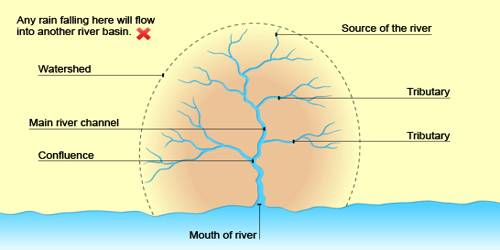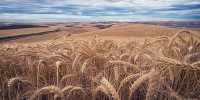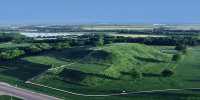Drainage Basin or River Basins
A river drains the water collected from a specific area, which is called its ‘catchment area’. An area drained by a river and its tributaries is called a drainage basin. The boundary line separating one drainage basin from the other is known as the watershed. The catchments of large rivers are called river basins while those of small rivulets and rills are often referred to as watersheds. There is, however, a slight difference between a river basin and a watershed. Watersheds are small in area while the basins cover larger areas. Every river is part of a network of watersheds that make up a river system’s entire drainage basin. All the water in the drainage basin flows downhill toward bigger rivers.

River basins and watersheds are marked by unity. What happens in one part of the basin or watershed directly affects the other parts and the unit as a whole. That is why; they are accepted as the most appropriate micro, meso or macro planning regions. The drainage basin includes all the surface water from rain runoff, snowmelt, and nearby streams that run downslope towards the shared outlet, as well as the groundwater underneath the earth’s surface.















